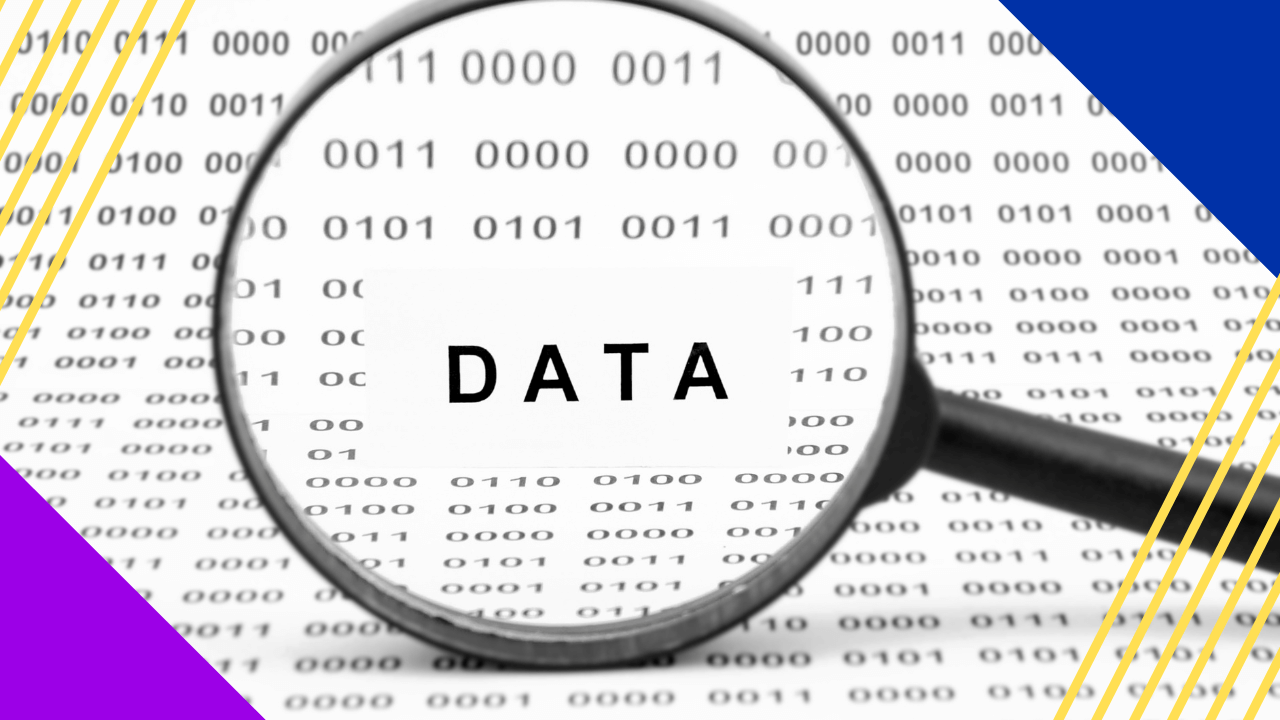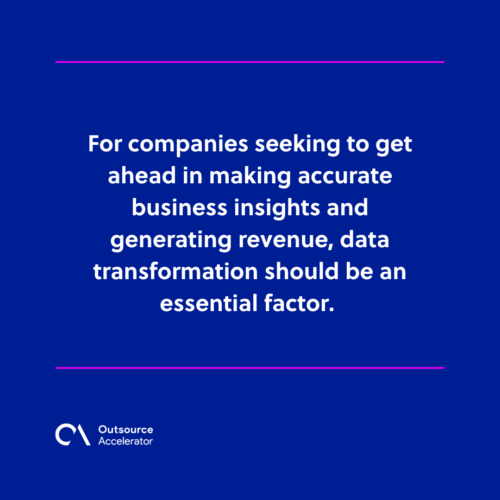What is data transformation?

The most successful businesses create results by properly using the data they collect. With so much data now in the world and still more to come, there has to be a means of changing it into a manageable form.
Enter data transformation.
Data transformation defined
Data transformation is simply the process of taking raw data and converting it into a more usable form. Many businesses today generally use the ETL (Extract, Transform, Load) process, of which data transformation is the middle step.
Raw data is pulled from its source systems, prepared for transformation into a new format, and stored. The resulting data is then utilized to inform more intelligent, data-driven decisions.
More current technologies can simply load raw data into their digital base and transform it when necessary, at a speed of only minutes or seconds. This more efficient process is called ELT (Extract, Load, Transform).
Analysts inspect the data structures to decide how it will be transformed. Data transformation can be:
- Constructive – which adds copies or replicates data.
- Destructive – which deletes fields or records.
- Aesthetic – to standardize values to meet specific requirements.
- Structural – which combines, divides, or re-orders data structures.
Data management processes such as data wrangling, data migration, data integration, and data warehousing all require some form of data transformation. Business data processing is increasingly being used as a practical tool for management.

Key steps of data transformation
Raw data first goes through data cleansing to prepare for its transformation. After the raw data has been collected and cleansed, several key steps will take place during the actual transformation period.
1. Data discovery
The first step is made up of processes that include collecting data, consolidating data, and reorganizing data. The main objective of this step is to identify and understand the information within its source format.
Generally, computer systems tend to interpret retrieved data based on its file extensions automatically. Analysts can go further and use data profiling tools or profiling scripts.
These tools allow them to look inside files and databases to take note of data attributes, structures, and, importantly, what needs to be transformed.
2. Data mapping
Next is a crucial step where the actual data transformation is planned. A misstep here can result in incorrect analysis, which will affect your entire organization.
This step deals with how individual fields are modified, mapped, filtered, joined, and aggregated.
The actions done during this stage result in a well-thought-out plan that identifies the data elements to be transformed and how. Analysts essentially “map” the journey of the data to its target destination format.
Because of how much this step encompasses, it is often the data transformation strategy’s most expensive and time-consuming segment.
Analysts must also consider whether any data could be lost during transformation and how to mitigate losses if needed.
3. Code generation
A software code is then created from the data mapping plan to perform the actual transformation. Data professionals may use scripts to write the code themselves or opt to generate it using a data transformation tool.
Executable coding languages such as SQL, Python, or R are used. Developers work closely with transformation technologies called code generators to form the code.
Code generators create a visual design atmosphere that can run on multiple platforms. This massively simplifies the task of code generation for enterprises.
4. Code execution
After the data transformation process has been planned and coded, it is now ready to run against your data. The code action is put into motion, and data undergoes transformation.
During this step, it is expected that your data will be rebuilt to reach its target format. A user may also choose to code their data in a way that it also changes into a new file format.
This is traditionally the last step data passes through before reaching human end-users.
5. Review
Final quality checks and corrections are made over the transformed data before it is sent to its destination database.
Data professionals or business end users certify that the resulting data meets transformation requirements. If necessary, a list of issues is made. Any anomalies and errors are then addressed and corrected through edits in the code.
Benefits of data transformation
For companies seeking to get ahead in making accurate business insights and generating revenue, data transformation should be an essential factor.

There are numerous benefits to acquiring data transformation software:
- Higher data quality – transformation significantly reduces or outright removes quality issues such as inconsistencies or missing values.
- Maximum data value usage – as businesses gain more data, so does the percentage that goes unanalyzed. Data transformation allows a much larger percentage of data to be used to inform business intelligence.
- Faster query performance – transformed data is stored in a source database, allowing easier accessibility and retrieval.
- Better data organization and management – refined metadata causes better management, understanding, and usage of information assets.
- Reduced risk – high-quality standardized data is effective in avoiding financial losses that come about from faulty managing of raw, unstructured data.
- High compatibility – Multiple tools and systems can process data sets that are transformed to share the same structures and formats. This also increases the speed of data processing.
Depending on the purpose, data can continually be transformed and manipulated in different ways to accomplish it.
For this process, Executive Boutique Call Center can help you build authentic data systems, ensuring your database is reliable and up-to-date.
Furthermore, data transformation is fast becoming a critical tool in every industry. No matter how big or small, businesses would do well to consider taking advantage of data transformation techniques.







 Independent
Independent




